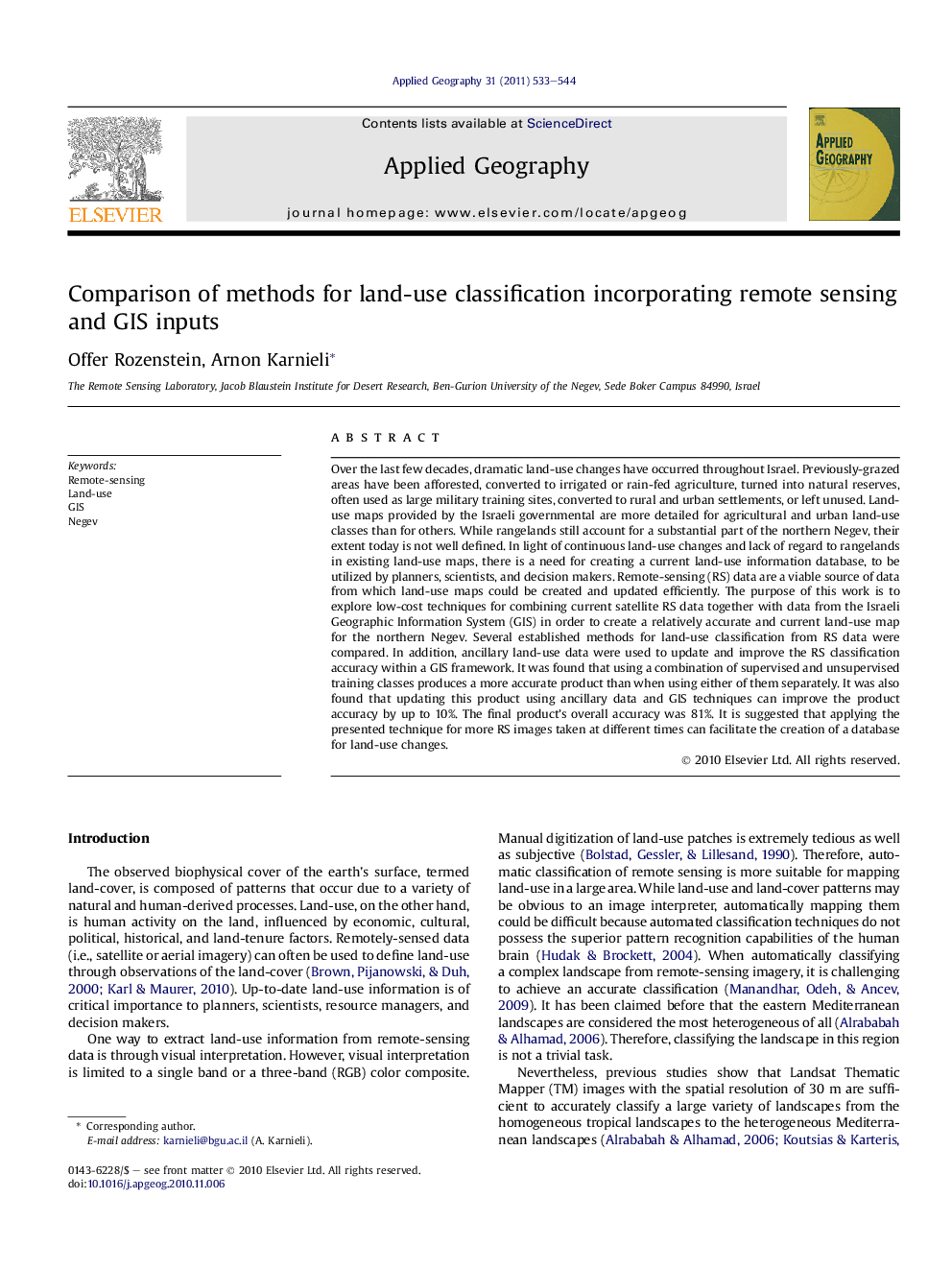| کد مقاله | کد نشریه | سال انتشار | مقاله انگلیسی | نسخه تمام متن |
|---|---|---|---|---|
| 83764 | 158738 | 2011 | 12 صفحه PDF | دانلود رایگان |

Over the last few decades, dramatic land-use changes have occurred throughout Israel. Previously-grazed areas have been afforested, converted to irrigated or rain-fed agriculture, turned into natural reserves, often used as large military training sites, converted to rural and urban settlements, or left unused. Land-use maps provided by the Israeli governmental are more detailed for agricultural and urban land-use classes than for others. While rangelands still account for a substantial part of the northern Negev, their extent today is not well defined. In light of continuous land-use changes and lack of regard to rangelands in existing land-use maps, there is a need for creating a current land-use information database, to be utilized by planners, scientists, and decision makers. Remote-sensing (RS) data are a viable source of data from which land-use maps could be created and updated efficiently. The purpose of this work is to explore low-cost techniques for combining current satellite RS data together with data from the Israeli Geographic Information System (GIS) in order to create a relatively accurate and current land-use map for the northern Negev. Several established methods for land-use classification from RS data were compared. In addition, ancillary land-use data were used to update and improve the RS classification accuracy within a GIS framework. It was found that using a combination of supervised and unsupervised training classes produces a more accurate product than when using either of them separately. It was also found that updating this product using ancillary data and GIS techniques can improve the product accuracy by up to 10%. The final product’s overall accuracy was 81%. It is suggested that applying the presented technique for more RS images taken at different times can facilitate the creation of a database for land-use changes.
Research highlights
► Land-use classification of the northern Negev was performed with 81% accuracy.
► Combined supervised and unsupervised training were used to achieve greater accuracy.
► Ancillary data was used post-classification to improve the accuracy by up to 10%.
► Rangelands were defined in a land-use map of this area for the first time.
Journal: Applied Geography - Volume 31, Issue 2, April 2011, Pages 533–544